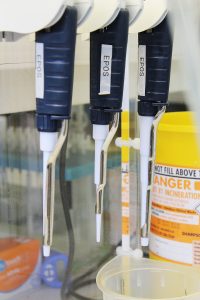Newcastle University expects students to be committed to academic honesty and will provide briefing and support materials to ensure that students know what is expected of them. It is important that assessment is fair and that students are rewarded for their own achievement. Dishonest conduct is unfair on the overwhelming majority of honest students, and so here we present the University’s policy and guidance on good academic conduct.
Plagiarism
Plagiarism is defined by the university as, “the unacknowledged use of another person’s ideas, words or work either verbatim or in substance without specific acknowledgement”.
For advice on plagiarism and other aspects of good academic conduct, we recommend that you read the information provided on the university website.
Plagiarism covers not just using words, but also, for example, concepts, ideas, data, designs, images, computer programmes and music. Note in particular that it refers to ideas, not just to words, so even if you express someone else’s ideas in your own words, the source of the idea must still be acknowledged.
 All the work submitted for assessment must be your own. If you feel it is necessary or desirable to include any results that were not obtained by you personally, this must be stated clearly in the text. All sources within the work must be acknowledged and a bibliography supplied. However, the inclusion of a source in a bibliography is not of itself a sufficient attribution of another’s work.
All the work submitted for assessment must be your own. If you feel it is necessary or desirable to include any results that were not obtained by you personally, this must be stated clearly in the text. All sources within the work must be acknowledged and a bibliography supplied. However, the inclusion of a source in a bibliography is not of itself a sufficient attribution of another’s work.
Although students are encouraged to discuss their work with colleagues, they are required to develop ideas and work independently. Students are on no account to copy the work of others, or allow another student to copy their own work.
All word will be subject to electronic scanning for evidence of plagiarism. If plagiarism is suspected in any work (whether whole or in part), the matter will be referred to the Chairman of the Examination Committee, who will investigate the matter and take action in accordance with the University’s Procedure for Assessment Irregularities.
For the avoidance of doubt, plagiarism may occur in an examination script as well as in assessed coursework, projects or other reports, and may involve the use of material downloaded from electronic sources such as the Internet. It doesn’t matter that the work is in the public domain, as for example on Wikipedia.
Please note that the University takes a very serious view of this offence and penalties for plagiarism and other irregularities include termination of studies.
Why do we have this requirement?
Good academic work is expected to draw on other sources, but these must be acknowledged. This enables others to see where the ideas you use have come from, which lends authority to your work. It also allows readers to follow up these sources directly if they wish. It involves being honest about what is your work and what is the work of others. Think how you would feel if someone used your work without acknowledging it. Students who plagiarise are gaining an unfair advantage over their honest colleagues.
How to avoid problems
- Ensure that you provide in-text references for all the ideas you have taken from elsewhere and reference them.
- Where you quote verbatim (word for word), you must show this is a quotation (usually by using quotation marks “……”) and indicate the source document of the quote either immediately before or after it in the main text.
- Don’t paraphrase or slightly modify work from another source and pass it off as your own. It is generally better to either include a direct quotation or to put things into your own words, but even then you must reference the source of the idea.
- Where you paraphrase or slightly modify others’ work, you must show an in-text reference at the beginning of, in the middle of (e.g. ……, as stated by Smith (2007)..…) or at the end of the paraphrased section. Don’t leave including your reference to the end of the paragraph. You should adopt a similar approach to that which you would use in quoting verbatim.
- Don’t cut and paste from other sources without acknowledging them, and only do this if a direct quotation is required. It is usually better to put things in your own words.
- Don’t submit other’s work as if it was your own e.g. borrowing text from another student; taking text from the web; paying someone else to write work for you.
- Don’t submit work you have prepared for one assessed submission, for another.
- Remember that listing a source in a list of references at the end of the work is not sufficient acknowledgement; there must also be an in-text reference.
- On the other hand you don’t need to reference material that is common knowledge, or facts widely available from a range of sources, although it is recommended that you always reference statistical data.
Collusion
Collusion is defined as the submission by two or more students of the same or similar pieces of work (or parts of pieces of work) that are presented as the individual’s own solely authored work. This could arise from students working together to complete the work, or by one student allowing another to copy his/her work. Copying without the author’s permission is not collusion, but taking another student’s work without permission is treated as theft.
Why do we have this requirement?
Apart from formal group work, any work you submit is expected to be your own. It is your degree and it is clearly dishonest to submit work which is not your own.
How to avoid problems
Students can of course help and support each other and this is to be encouraged. It is a question of knowing where to draw the line. The following list provides examples of forms of co-operation with fellow students that are to be encouraged:
- Notifying them of useful references
- Directing someone to a source for an idea
- Shared discussion and development of ideas jointly identifying ideas from a third party
- Discussing what the assessment requirements involve
- Discussing the techniques used in calculations
- Sharing books and articles
To avoid collusion you should:
- Write any submission on your own, and in your own words (except when citing references)
- Not copy verbatim or in substance part or all of the work of other students
- Take care to keep your work secure
Proof reading
 As the work you submit should be your own work, there are limits to the extent to which you should use a proof reader.
As the work you submit should be your own work, there are limits to the extent to which you should use a proof reader.
Why do we have this requirement?
The key issue here is to what degree the ideas within the work are truly your own work. If proofreading becomes rewriting, then the work is no longer completely your own.
How to avoid problems
The use of proofreading to highlight deficiencies such as spelling and grammatical errors is normally legitimate, as the work is still demonstrably your own. The proof reading identifies deficiencies, but it is your job to correct these. The use of proof reading to rewrite the text, correct citation errors and alter the content is not acceptable.
Some disabled or dyslexic students receive proof reading support where the Disability Support Service identifies this as necessary. The dyslexia tutor may guide them to clarify their arguments, but they will still be identifying their own deficiencies and correcting these themselves.
Falsifying results
You are expected to be honest in submitting research results, which should not be falsified. Falsified means including fictitious or false data, but also by suppressing results, perhaps because they don’t match prior expectations.
Why do we have this requirement?
In universities we rely on researchers being totally honest about their results, otherwise their conclusions and any action taken in consequence of their findings will be flawed. How would you feel if one of the sources you were using had been dishonest about research results, when you are relying on them?
Support
General support materials can be found on the web at: www.ncl.ac.uk/right-cite. In particular you are encouraged to work through the web-based tutorial package on plagiarism at that address.
